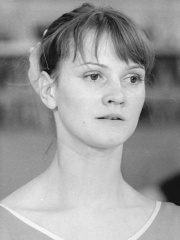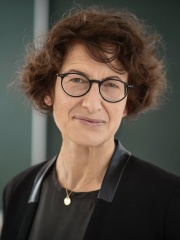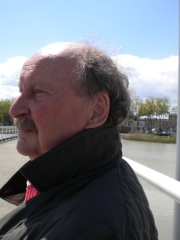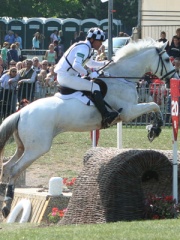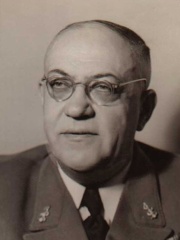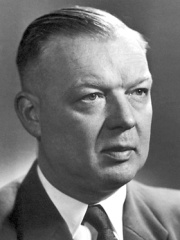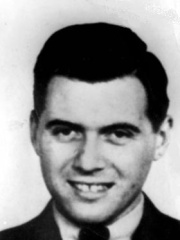
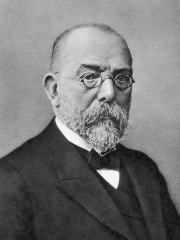
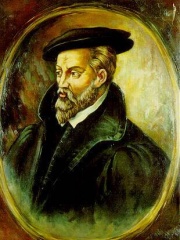
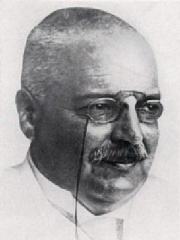
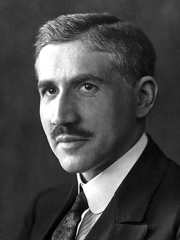
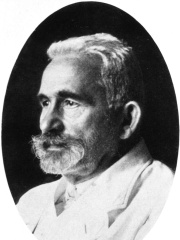
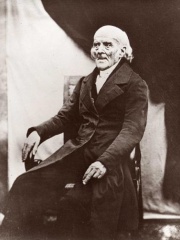
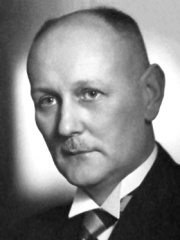
The Most Famous
PHYSICIANS from Germany
This page contains a list of the greatest German Physicians. The pantheon dataset contains 726 Physicians, 103 of which were born in Germany. This makes Germany the birth place of the 2nd most number of Physicians.
Top 10
The following people are considered by Pantheon to be the top 10 most legendary German Physicians of all time. This list of famous German Physicians is sorted by HPI (Historical Popularity Index), a metric that aggregates information on a biography's online popularity. Visit the rankings page to view the entire list of German Physicians.

1. Josef Mengele (1911 - 1979)
With an HPI of 84.33, Josef Mengele is the most famous German Physician. His biography has been translated into 70 different languages on wikipedia.
Josef Mengele (German: [ˈjoːzɛf ˈmɛŋələ] ; 16 March 1911 – 7 February 1979), often dubbed the "Angel of Death" (German: Todesengel), was a Nazi German Schutzstaffel (SS) officer and physician during World War II at the Soviet front and then at Auschwitz during the Holocaust. He conducted research and experiments on prisoners at the Auschwitz II-Birkenau concentration camp, where he was a member of the team of doctors who selected victims to be murdered in the gas chambers. Before the war, Mengele received doctorates in anthropology and medicine, and he began a career as a researcher. He joined the Nazi Party in 1937 and the SS in 1938. He was assigned as a battalion medical officer at the start of World War II, then transferred to the Nazi concentration camps service in early 1943. He was assigned to Auschwitz, where he saw the opportunity to conduct genetic research on human subjects. With Red Army troops sweeping through German-occupied Poland, Mengele was transferred 280 kilometres (170 miles) away from Auschwitz to the Gross-Rosen concentration camp on 17 January 1945, ten days before the arrival of the Soviet forces at Auschwitz. After the war, Mengele fled to Argentina in July 1949, assisted by a network of former SS members. He initially lived in and around Buenos Aires, but fled to Paraguay in 1959 and later Brazil in 1960, all while being sought by West Germany, Israel, and Nazi hunters such as Simon Wiesenthal, who wanted to bring him to trial. Mengele eluded capture despite extradition requests by the West German government and clandestine operations by the Israeli intelligence agency Mossad. He drowned in 1979 after suffering a stroke while swimming off the coast of Bertioga, and was buried under the false name of Wolfgang Gerhard. His remains were disinterred and positively identified by forensic examination in 1985 and DNA analysis in 1992.

2. Robert Koch (1843 - 1910)
With an HPI of 83.47, Robert Koch is the 2nd most famous German Physician. His biography has been translated into 114 different languages.
Heinrich Hermann Robert Koch ( KOKH; German: [ˈʁoːbɛʁt kɔx] ; 11 December 1843 – 27 May 1910) was a German physician and microbiologist. As the discoverer of the specific causative agents of deadly infectious diseases including tuberculosis, cholera and anthrax, he is regarded as one of the main founders of modern bacteriology. As such he is popularly nicknamed the father of microbiology (with Louis Pasteur), and as the father of medical bacteriology. His discovery of the anthrax bacterium (Bacillus anthracis) in 1876 is considered as the birth of modern bacteriology. Koch used his discoveries to establish that germs "could cause a specific disease" and directly provided proofs for the germ theory of diseases, therefore creating the scientific basis of public health, saving millions of lives. For his life's work Koch is seen as one of the founders of modern medicine. While working as a private physician, Koch developed many innovative techniques in microbiology. He was the first to use the oil immersion lens, condenser, and microphotography in microscopy. His invention of the bacterial culture method using agar and glass plates (later developed as the Petri dish by his assistant Julius Richard Petri) made him the first to grow bacteria in the laboratory. In appreciation of his work, he was appointed to government advisor at the Imperial Health Office in 1880, promoted to a senior executive position (Geheimer Regierungsrat) in 1882, Director of Hygienic Institute and Chair (Professor of hygiene) of the Faculty of Medicine at Berlin University in 1885, and the Royal Prussian Institute for Infectious Diseases (later renamed Robert Koch Institute after his death) in 1891. The methods Koch used in bacteriology led to the establishment of a medical concept known as Koch's postulates, four generalized medical principles to ascertain the relationship of pathogens with specific diseases. The concept is still in use in most situations and influences subsequent epidemiological principles such as the Bradford Hill criteria. A major controversy followed when Koch discovered tuberculin as a medication for tuberculosis which was proven to be ineffective, but developed for diagnosis of tuberculosis after his death. For his research on tuberculosis, he received the Nobel Prize in Physiology or Medicine in 1905. The day he announced the discovery of the tuberculosis bacterium, 24 March 1882, has been observed by the World Health Organization as "World Tuberculosis Day" every year since 1982.

3. Georgius Agricola (1494 - 1555)
With an HPI of 77.34, Georgius Agricola is the 3rd most famous German Physician. His biography has been translated into 55 different languages.
Georgius Agricola (; born Georg Bauer; 24 March 1494 – 21 November 1555) was a German Humanist scholar, mineralogist and metallurgist. Born in the small town of Glauchau, in the Electorate of Saxony of the Holy Roman Empire, he was broadly educated, but took a particular interest in the mining and refining of metals. He was the first to drop the Arabic definite article al-, exclusively writing chymia and chymista in describing activity that we today would characterize as chemical or alchemical, giving chemistry its modern name. For his groundbreaking work De Natura Fossilium published in 1546, he is generally referred to as the father of mineralogy and the founder of geology as a scientific discipline. He is well known for his pioneering work De re metallica libri XII, that was published in 1556, one year after his death. This 12-chapter work is a comprehensive and systematic study, classification and methodical guide on all available factual and practical aspects, that are of concern for mining, the mining sciences and metallurgy, investigated and researched in its natural environment by means of direct observation. Unrivalled in its complexity and accuracy, it served as the standard reference work for two centuries. Agricola stated in the preface, that he will exclude "all those things which I have not myself seen, or have not read or heard of". He continued, "That which I have neither seen, nor carefully considered after reading or hearing of, I have not written about." As a scholar of the Renaissance, he was committed to a universal approach towards learning and research. He published over 40 complete scholarly works during his professional life on a wide range of subjects and disciplines, such as pedagogy, medicine, metrology, mercantilism, pharmacy, philosophy, geology, history, and many more. His innovative and comprehensive scholarly work, based on new and precise methods of production and control, has made his work a central part of scholarship and understanding of science during that period.

4. Alois Alzheimer (1864 - 1915)
With an HPI of 76.24, Alois Alzheimer is the 4th most famous German Physician. His biography has been translated into 61 different languages.
Alois Alzheimer ( AHLTS-hy-mər, German: [ˈaːlɔɪs ˈʔaltshaɪmɐ]; 14 June 1864 – 19 December 1915) was a German psychiatrist, neuropathologist and colleague of Emil Kraepelin. He is credited with identifying the first published case of "presenile dementia", which Kraepelin later identified as Alzheimer's disease.
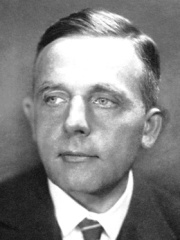
5. Otto Heinrich Warburg (1883 - 1970)
With an HPI of 75.41, Otto Heinrich Warburg is the 5th most famous German Physician. His biography has been translated into 61 different languages.
Otto Heinrich Warburg (German pronunciation: [ˈɔto ˈvaːɐ̯bʊʁk] , ; 8 October 1883 – 1 August 1970) was a German physiologist, medical doctor, and Nobel laureate. He served as an officer in the elite Uhlan (cavalry regiment) during the First World War, and was awarded the Iron Cross (1st Class) for bravery. He was the sole recipient of the Nobel Prize in Physiology or Medicine in 1931. In total, he was nominated for the award 47 times over the course of his career.

6. Otto Fritz Meyerhof (1884 - 1951)
With an HPI of 74.48, Otto Fritz Meyerhof is the 6th most famous German Physician. His biography has been translated into 59 different languages.
Otto Fritz Meyerhof (German pronunciation: [ˈɔto ˈmaɪɐhoːf] ; 12 April 1884 – 6 October 1951) was a German physician and biochemist who won the 1922 Nobel Prize in Physiology and Medicine.

7. Emil Kraepelin (1856 - 1926)
With an HPI of 73.93, Emil Kraepelin is the 7th most famous German Physician. His biography has been translated into 46 different languages.
Emil Wilhelm Georg Magnus Kraepelin (; German: [ˈeːmiːl 'kʁɛːpəliːn]; 15 February 1856 – 7 October 1926) was a German psychiatrist. H. J. Eysenck's Encyclopedia of Psychology identifies him as helping to lay the foundation for modern scientific psychiatry, psychopharmacology and psychiatric genetics. Kraepelin believed the chief origin of psychiatric disease to be biological and genetic malfunction. His theories dominated psychiatry at the start of the 20th century and, despite the later psychodynamic influence of Sigmund Freud and his disciples, enjoyed a revival at century's end. While he proclaimed his own high clinical standards of gathering information "by means of expert analysis of individual cases", he also drew on reported observations of officials not trained in psychiatry. His textbooks do not contain detailed case histories of individuals but mosaic-like compilations of typical statements and behaviors from patients with a specific diagnosis. He has been described as "a scientific manager" and "a political operator", who developed "a large-scale, clinically oriented, epidemiological research programme". He developed racist psychiatric theories.

8. Samuel Hahnemann (1755 - 1843)
With an HPI of 73.71, Samuel Hahnemann is the 8th most famous German Physician. His biography has been translated into 56 different languages.
Christian Friedrich Samuel Hahnemann ( HAH-nə-mən, German: [ˈzaːmueːl ˈhaːnəman]; 10 April 1755 – 2 July 1843) was a German physician, best known for creating the pseudoscientific system of alternative medicine called homeopathy.

9. Gerhard Domagk (1895 - 1964)
With an HPI of 73.70, Gerhard Domagk is the 9th most famous German Physician. His biography has been translated into 68 different languages.
Gerhard Johannes Paul Domagk (German pronunciation: [ˈɡeːɐ̯haʁt ˈdoːmak] ; 30 October 1895 – 24 April 1964) was a German pathologist and bacteriologist. He is credited with the discovery of sulfonamidochrysoidine (KL730) as an antibiotic for which he received the 1939 Nobel Prize in Physiology or Medicine. The drug became the first commercially available antibiotic and marketed under the brand name Prontosil. While working in the pathology department of the University of Münster, Domagk was invited to join the IG Farben branch at Elberfeld (later Wuppertal) in 1927. His duty was to test chemical compounds prepared at the IG Farben laboratory for potential drugs. A novel compound synthesised by Friedrich Mietzsch and Joseph Klarer, a benzene derivative of azo dye attached with sulphonamide group as a side chain was found to have antibacterial activity against human bacterium Streptococcus pyogenes. In 1935, Domagk's only daughter, Hildegarde, injured herself and contracted a streptococcal infection. In a desperate attempt to save his daughter's arm from amputation and her life, Domagk used the new compound that eventually cured the infection. Given the brand name Prontosil, the new drug became the first antibiotic commercially available for bacterial infections. Domagk was chosen to receive the 1939 Nobel Prize in Physiology or Medicine "for the discovery of the antibacterial effects of prontosil," but the Nazi government prohibited him from receiving the award. In 1947, after the fall of Nazi Germany, he was officially given the Nobel diploma and delivered the Nobel lecture.
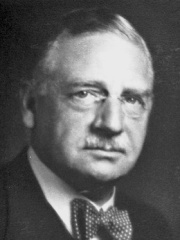
10. Otto Loewi (1873 - 1961)
With an HPI of 73.11, Otto Loewi is the 10th most famous German Physician. His biography has been translated into 55 different languages.
Otto Loewi (German: [ˈɔtoː ˈløːvi] ; 3 June 1873 – 25 December 1961) was a German-born pharmacologist and psychobiologist who discovered the role of acetylcholine as an endogenous neurotransmitter. For this discovery, he was awarded the Nobel Prize in Physiology or Medicine in 1936, which he shared with Sir Henry Dale, who was a lifelong friend that helped to inspire the neurotransmitter experiment. Loewi met Dale in 1902 when spending some months in Ernest Starling's laboratory at University College, London.
People
Pantheon has 103 people classified as German physicians born between 1165 and 1967. Of these 103, 4 (3.88%) of them are still alive today. The most famous living German physicians include Karin Büttner-Janz, Özlem Türeci, and Edzard Ernst. The most famous deceased German physicians include Josef Mengele, Robert Koch, and Georgius Agricola.
Living German Physicians
Go to all RankingsKarin Büttner-Janz
1952 - Present
HPI: 56.58
Özlem Türeci
1967 - Present
HPI: 56.43
Edzard Ernst
1948 - Present
HPI: 55.13
Hinrich Romeike
1963 - Present
HPI: 45.58
Deceased German Physicians
Go to all RankingsJosef Mengele
1911 - 1979
HPI: 84.33
Robert Koch
1843 - 1910
HPI: 83.47
Georgius Agricola
1494 - 1555
HPI: 77.34
Alois Alzheimer
1864 - 1915
HPI: 76.24
Otto Heinrich Warburg
1883 - 1970
HPI: 75.41
Otto Fritz Meyerhof
1884 - 1951
HPI: 74.48
Emil Kraepelin
1856 - 1926
HPI: 73.93
Samuel Hahnemann
1755 - 1843
HPI: 73.71
Gerhard Domagk
1895 - 1964
HPI: 73.70
Otto Loewi
1873 - 1961
HPI: 73.11
Theodor Morell
1886 - 1948
HPI: 72.04
Werner Forssmann
1904 - 1979
HPI: 70.90
Overlapping Lives
Which Physicians were alive at the same time? This visualization shows the lifespans of the 25 most globally memorable Physicians since 1700.

